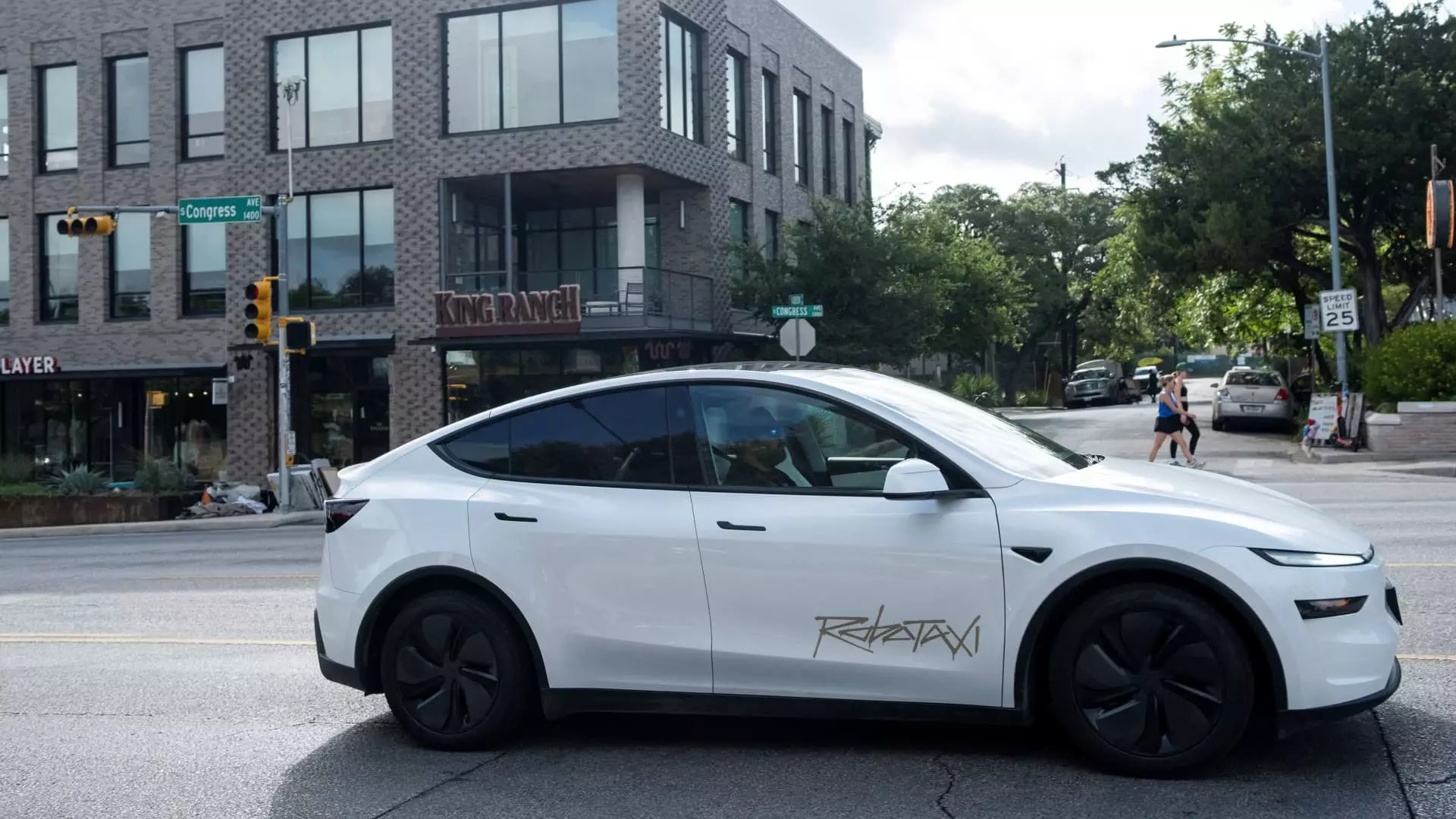Tesla’s recent foray into the world of autonomous driving has ignited both excitement and concern. The electric vehicle giant officially launched its robotaxi service in Austin, Texas, which was met with a promising introduction but quickly dashed by videos that showcased erratic driving behaviors. This dichotomy between innovation and safety feeds into a broader dialogue about the implications of pushing autonomous technology to market prematurely, especially when lives are potentially at risk.
With invitations extended to a select few for early access, the company aimed to create a buzz while also carefully managing the rollout of its latest innovation. However, the alarming visuals circulating on social media suggested that these austere measures might not suffice. One can hardly ignore the sight of a robotaxi traveling counter to oncoming traffic or abruptly halting amidst a flow of vehicles due to misjudged stimuli such as stationary police cars. Such scenarios highlight a fundamental question: Is Tesla ready to harness self-driving technology responsibly?
NHTSA’s Vigilance Amidst Innovation
The National Highway Traffic Safety Administration (NHTSA) has taken notice of the unsettling videos that have surfaced and has reached out to Tesla for clarification. Their inquiry reflects a growing apprehension about vehicle safety in an era where technological advancements outpace regulatory oversight. To put it simply, the NHTSA does not sanction new vehicle technologies beforehand; instead, it relies on the manufacturer’s assurances that their products adhere to federal safety standards.
The agency’s non-approving stance raises the stakes for Tesla. While innovation often requires a leap of faith, it must not come at the expense of road safety. In response to previous unfortunate incidents involving Tesla’s Full Self-Driving (FSD) technology, an investigation remains underway to explore possible safety defects. This ongoing scrutiny underscores the precarious balance between innovation and public safety.
Elon Musk’s Vision vs. Reality
Elon Musk’s ambitious predictions have formed an integral part of Tesla’s narrative. In the past, he confidently claimed that Teslas would achieve full autonomy within mere years, promising a future where drivers could relax while their vehicles steered autonomously. However, these aspirations have yet to materialize, contradicting Musk’s earlier projections where he envisioned a million robotaxi-ready vehicles on the roads by 2020. Fast forward to today, Tesla’s latest pilot program encompasses a limited number of cars operating under strictly defined parameters, making it evident that reality hasn’t followed Musk’s script.
The critical factors surrounding the recent robotaxi deployment are not only about technological readiness but also the public’s perception. While Tesla shares experienced a spike post-launch, buoyed by investor optimism, the persistent narrative of unfulfilled promises casts a shadow over the company’s credibility in the autonomous driving domain. The disconnect between Musk’s prescient aspirations and the operational limitations of reality raises pertinent questions regarding transparency and decisive leadership.
A Competitive Landscape
As Tesla grapples with its own hurdles in achieving true autonomy, the competitive landscape is evolving swiftly. Rivals like Alphabet’s Waymo have reported considerable successes, crossing the significant milestone of ten million paid rides. Moreover, competitors like Baidu’s Apollo Go and others in China are actively managing their commercial robotaxi operations. This phenomenon illustrates that while Tesla may have been a pioneer in electric vehicles, the race for advanced autonomous technology is heating up, and the company risks losing its lead if it doesn’t address its operational challenges swiftly.
The juxtaposition of active competitors managing commercial fleets and Tesla’s cautious approach starkly indicates that the path to viable robotaxi services is fraught with both challenges and opportunities. There’s no doubt that Tesla’s robotaxi experiment is a high-stakes gamble that could either affirm the company’s leadership in the automotive industry or relegate it to the sidelines. As the road ahead unfolds, it’s becoming increasingly evident that proactive measures, rigorous testing, and responsible deployment are prerequisites to ensuring that innovation does not come at the expense of public safety.

